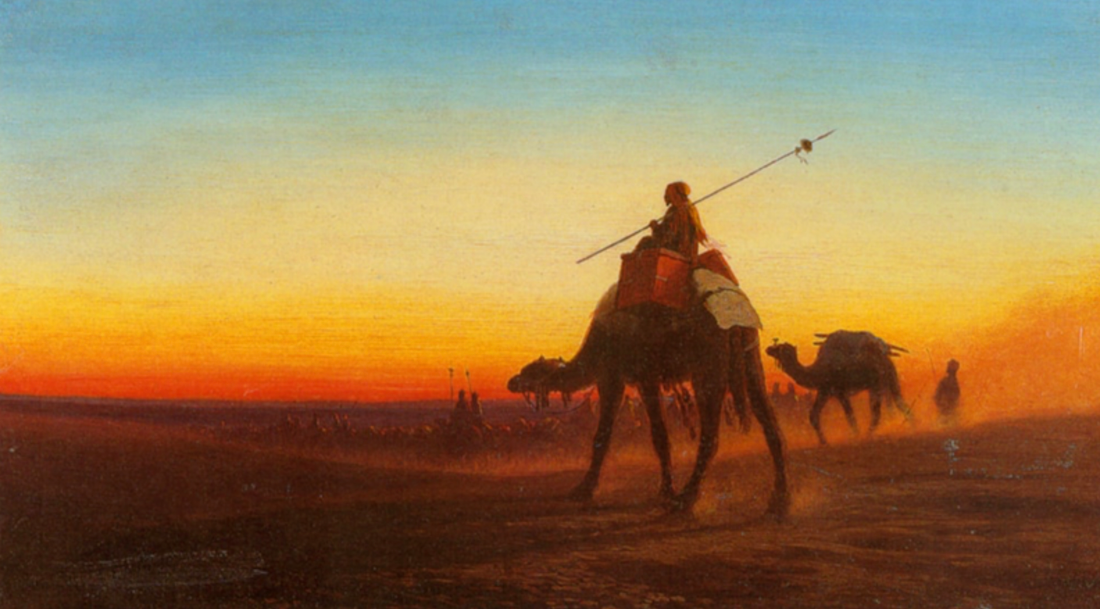
The Enchanting World of Orientalist Art: A Journey Through Time, Beauty, and Controversy
Share
Orientalist art, a captivating genre that conjures images of exotic landscapes, mystifying rituals, and colorful bazaars, has enraptured art enthusiasts around the globe for centuries.
What is Orientalism, and how has it come to symbolize so much more than a mere artistic genre?
The term "orient" originates from the Latin word "oriens," signifying "rising" or "east." For centuries, it has been synonymous with lands rich in culture and mystery, located to the east of Europe. This word not only paints a picture of a geographical direction but embodies an enthralling world filled with beauty and wonder, a world that continues to captivate modern audiences. If you've ever been mesmerized by the intricate details of Orientalist paintings or intrigued by Eastern aesthetics, you're about to embark on an exciting exploration.
“Rudolph Ernst - The Tiger Hunt”
Orientalism originated from a desire to comprehend the unknown. Scholars, termed “Orientalists”, had specialised expeditions to study cultures, religions, and lifestyles of the ‘East’ from a Western perspective. They ventured into vast regions, encompassing the Middle East, Turkey, East and Southwest Asia, and parts of Africa. The early fascination with the Orient was ignited by European travelers, explorers, and traders in the 18th century, who encountered lands filled with architectural marvels, vibrant markets, and diverse cultures. This was the era when the art world became infatuated with these Eastern aesthetics, initiating the Orientalist movement. This artistic genre allowed Westerners to escape into a world of imagination, where Eastern cultures were celebrated through vivid colors, exotic scenes, and intricate details.
A blend of curiousity and imagination
Note: Stay tuned for an upcoming post that will delve into Delacroix's works and his unique approach to Orientalist

“Women of Algiers in Their Apartment - Eugène Delacroix”
Credit: The Louvre Museum
Unfortunately, the portrayal of the Orient was not always idyllic or respectful. While travel to the Eastern world during the 19th century did provide artists like Jean-Léon Gérôme with firsthand experience, it didn't necessarily lead to more accurate portrayals. Some paintings, such as "The Snake Charmer," have become sources of controversy. The painting, though visually striking, embodies Western stereotypes and misconceptions about Arab and Muslim cultures. Rather than depicting the reality of the region, it paints a fantastical and derogatory image that caters to 18th-century Western preconceptions. This issue is not unique to Gérôme; it's a complex and multifaceted aspect of Orientalist art. Many works from this period reflect a fascination with the exotic but often fail to engage with the cultures they depict in a meaningful or respectful way. These misrepresentations have led to ongoing debates about the legacy of Orientalist art, allowing us to approach it with a more nuanced and critical perspective.

In our modern world, Orientalist art continues to inspire artists, designers, and art lovers alike. It's not just a relic of the past but a living testament to human creativity and cultural appreciation. If you're an art enthusiast intrigued by the mystique of the Orient, why not explore our collection of Orientalist-inspired art products? From posters to canvases, our curated selection captures the timeless allure of the East, new artworks are being added frequently, offering a unique blend of tradition and modernity.
The enchanting world of Orientalist art is more than a historical movement; it's a vibrant tapestry woven with creativity, culture, and human expression. It invites us to explore, learn, and celebrate the rich diversity that makes our world so fascinating. Whether you're an art connoisseur or a curious explorer, Orientalist art offers a captivating window into a world filled with beauty and intrigue. Its legacy continues to resonate, reflecting our endless quest for understanding, connection, and artistic expression. So why not immerse yourself in this enchanting world? Discover the masterpieces that have shaped art history and find inspiration in our carefully curated collection of art products that celebrate the Orientalist tradition.
Stay captivated with Orientalist art, and continue to explore the beauty and complexity of this enthralling genre with our upcoming posts.
AR.





